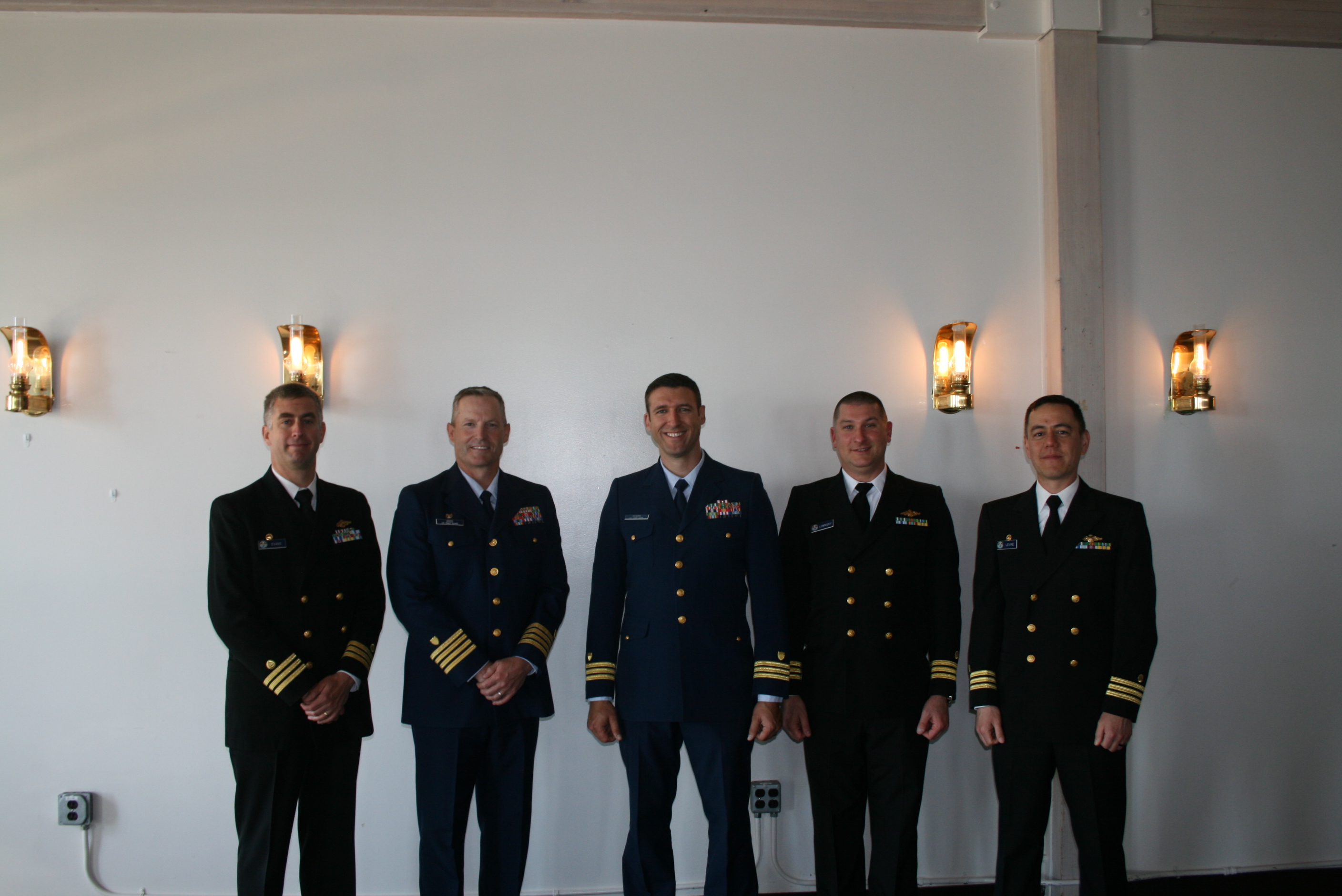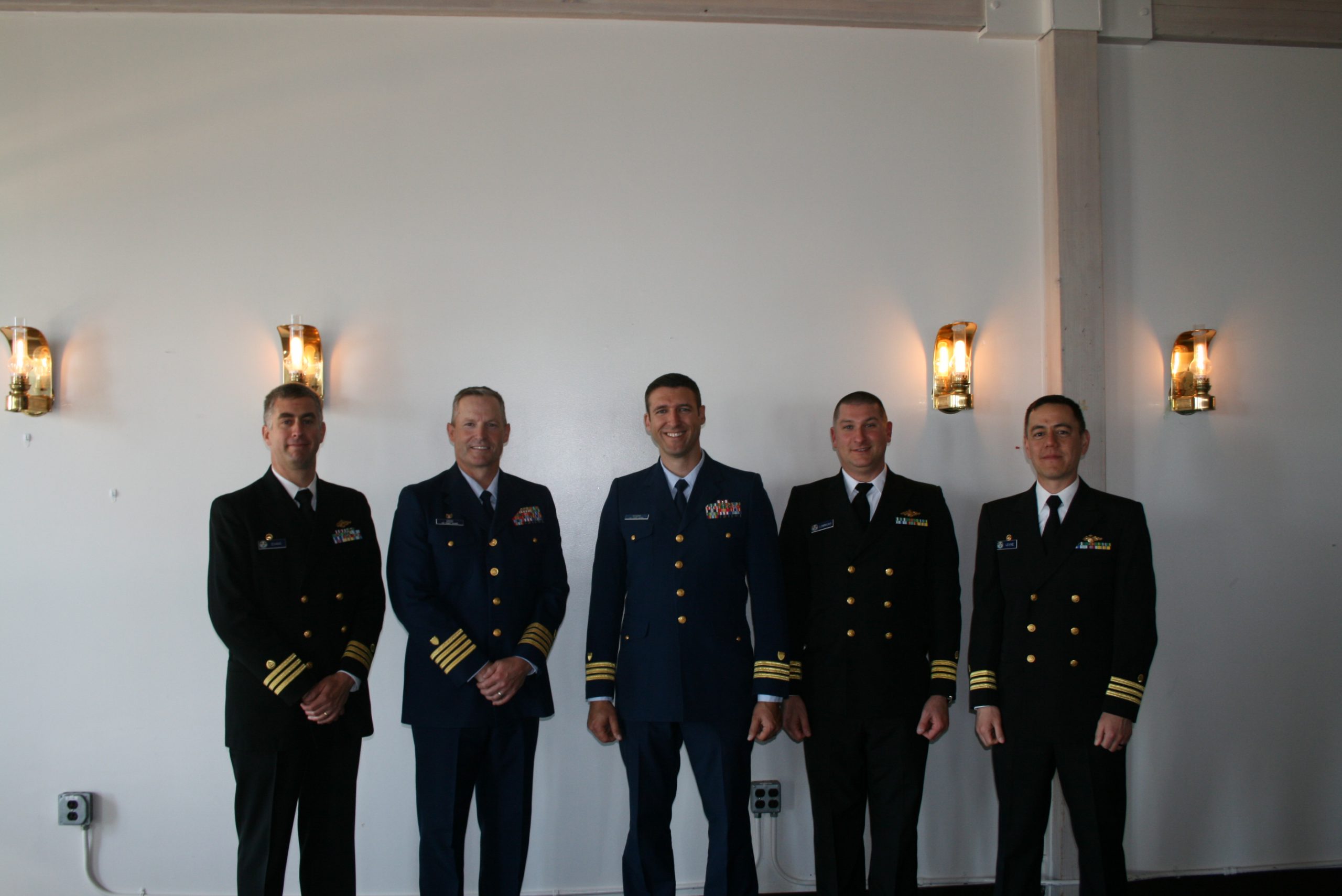by ENS Michelle Levano
On July 22, 2017, the crew of NOAA Ship Rainier hosted a change of command while at United States Coast Guard Base Kodiak, Alaska.
Commander Benjamin Evans accepted command of Rainier, relieving Commander John Lomnicky in a ceremony led by Captain Keith Roberts, commanding officer of NOAA’s Office of Marine and Aviation Operations (OMAO) Marine Operations Center-Pacific. Distinguished guests included Captain Richard Brennan, chief of NOAA Office of Coast Survey’s Hydrographic Surveys Division, Mr. Greg Kaplan, Military and Veterans Affairs liaison for Senator Lisa Murkowski, Captain Jeffery Good, commanding officer United States Coast Guard (USCG) Base Kodiak, Commander Michael Levine, commanding officer of NOAA Ship Oscar Dyson, and Commander Daniel Rogers, executive officer of United States Coast Guard Base Kodiak.

The commanding officer of a NOAA ship has ultimate responsibility for the ship, her activities, and the safety of all aboard. On board NOAA Ship Rainier, the commanding officer is also the chief scientist with responsibility for the execution and success of the ship’s assigned hydrographic survey operations.
Commander Lomnicky served as Rainier’s executive officer for two years prior to taking command in January 2017. During his tenure, Commander Lomnicky got the ship underway from her winter repair period in Newport, Oregon, successfully transited the Inside Passage of British Columbia and Southeast Alaska, and arrived in the Kodiak area on schedule. The ship immediately commenced assigned survey operations in Chiniak Bay, outside of Kodiak. Additionally, during his last leg as commanding officer, Commander Lomnicky initiated survey operations outside of King Cove, Alaska, in the Cold Bay vicinity. Although Commander Lomnicky led Rainier for only six months, the ship’s crew completed 25 percent of the total survey mileage from the last four years while under his command. Commander Lomnicky’s next assignment will be as chief of Coast Survey’s Navigation Response Branch, where he will lead NOAA’s mobile hydrographic survey teams.
Commander Evans’ career to date has focused primarily on NOAA’s ocean mapping and nautical charting mission. At sea, he has served as operations officer of NOAA ships Rude and Rainier, and plankowning commanding officer of NOAA Ship Ferdinand R. Hassler. His shore assignments have included technical and management roles in Coast Survey, service on the staff of the NOAA administrator, and several detail assignments and special projects. Commander Evans is reporting to Rainier from Coast Survey’s Pacific Hydrographic Branch in Seattle, Washington, where he led NOAA’s hydrographic data quality review and chart update compilation for the west coast. Commander Evans holds a bachelor of arts in physics from Williams College and an oceanographic engineer degree from the Massachusetts Institute of Technology / Woods Hole Oceanographic Institution Joint Program. Commander Evans’ wife Kimberly and two children reside in Seattle.

“I wish Commander Lomnicky all the best as NOAA’s chief of their Navigation Response Branch,” Mr. Kaplan read in a letter from Senator Murkowski. “I also want to welcome Commander Evans to his new post. I look forward to the great work that he and his crew will continue to do to promote Alaska and the United States.”
NOAA Ship Rainier is one of the most productive hydrographic survey platforms of its type in the world. The ship is named for Mount Rainier, located in Washington state. NOAA Ship Rainier’s officers, technicians, scientists and crew acquire and process the hydrographic data that NOAA cartographers use to create and update the nation’s nautical charts with ever-increasing data richness and precision.

